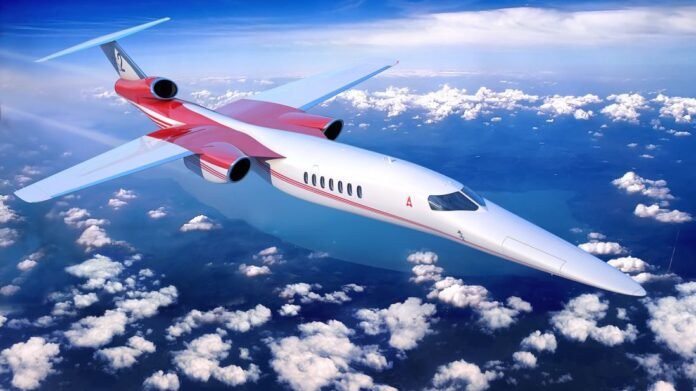For many travelers, the mention of ‘supersonic flight’ evokes a blend of futuristic imagination and nostalgic recollections. The era of the Concorde, that iconic slender-nosed jet which whisked celebrities and jet-setters across the Atlantic in just a few hours, has become a symbol of both glory and bygone days. Renowned for its remarkable transit speed, completing the journey from New York to London in just over three hours at twice the speed of sound, the Concorde’s legacy was ultimately curtailed by a confluence of factors. Chief among these were the disruptive sonic booms generated during supersonic flight and the substantial operational costs, making it challenging for airlines to sustain profitability. Consequently, by 2003, the Concorde was retired.
However, a renewed pursuit of supersonic air travel is currently underway through two prominent aviation initiatives: Boom Technology, a private company, and a collaboration between NASA and Lockheed Martin. In the coming year, both endeavors are poised to mark a significant milestone as they conduct test flights for their innovative supersonic aircraft.
European sleeper train now offers private pods exclusively for solo travelers.
A key obstacle to the resurgence of supersonic planes in modern air travel lies in the thunderous sonic booms generated when breaking the sound barrier. To address this, NASA and Lockheed Martin are dedicated to developing a quieter supersonic experience. NASA’s project, known as Quesst, aims to design a jet producing a more subtle “sonic thump” rather than a disruptive boom. The unveiling of the experimental jet, named X-59, on January 12, signifies a pivotal step in this endeavor. Expected to reach speeds 1.4 times faster than the speed of sound (925 miles per hour), the X-59’s distinctive design and cutting-edge technologies are intended to mitigate the impact of its sonic boom.
With the completion of its design phase, the X-59 is slated to undergo a series of ground tests before its inaugural flight later in the year. The flight tests will be conducted in California at Lockheed’s and NASA’s research centers. Following these tests, the aircraft will be flown over selected cities in the U.S. to gather public feedback on the perceived noise levels. The data obtained will be shared with regulators and the aviation industry to pave the way for quiet commercial supersonic travel over land.
Boom Supersonic, based in Colorado, is another major player committed to reintroducing commercial supersonic flights to U.S. airlines by 2029. Their passenger aircraft, Overture, is designed to reach speeds up to Mach 1.7 (approximately 1,300 miles per hour), twice as fast as current passenger planes. The XB-1, Boom’s first test aircraft, is set for its inaugural test flight in early 2024, serving as a supersonic demonstrator to prove the company’s capability to break the sound barrier.
The potential impact of supersonic air travel on passengers is substantial. The reduced sonic booms, coupled with the ability to travel at unprecedented speeds, could revolutionize long-haul journeys. Boom’s Overture, expected to carry passengers, is designed to meet current takeoff and landing noise standards and will only exceed the sound barrier over water. The introduction of this technology aligns with NASA’s quiet boom initiative, offering the promise of a more environmentally sustainable and enjoyable travel experience.
Major U.S. airlines, including United Airlines and American Airlines, have already placed orders for Boom’s supersonic aircraft. United, for instance, has ordered 15 Overture jets with delivery anticipated in 2029, envisioning shorter flight times for various routes.
The cabin experience within these supersonic planes is also poised for a transformation. With a capacity ranging from 65 to 80 passengers, Boom aims to provide an exclusive atmosphere, rivaling current top-tier business-class offerings. Features such as large personal windows, direct aisle access, dedicated underseat storage, and a first-class, lie-flat experience are envisioned to redefine the in-flight experience for passengers.
Beyond the realm of convenience and luxury, the revival of supersonic air travel holds potential environmental benefits. The incorporation of sustainable aviation fuel in Boom’s planes, enabling a net-zero carbon output, aligns with the growing emphasis on eco-friendly aviation practices.
In essence, the resurgence of supersonic air travel could usher in a new era of efficient, luxurious, and environmentally conscious flying. For travelers, this not only means reclaiming precious time but also signifies a shift towards a more sustainable and enjoyable way to traverse the skies. The quest for efficiency, effectiveness, and comfort in air travel, reminiscent of the Concorde’s golden age, is once again on the horizon, poised to reshape the future of aviation.

































